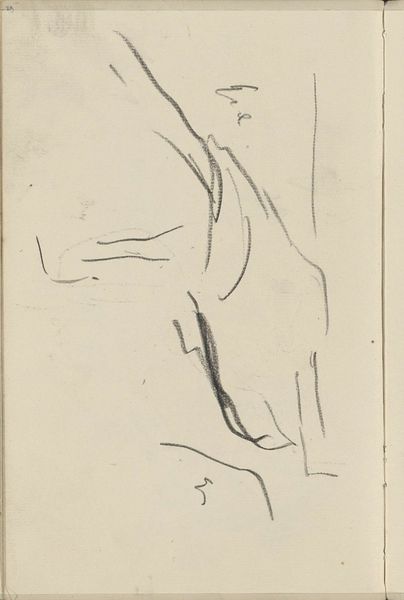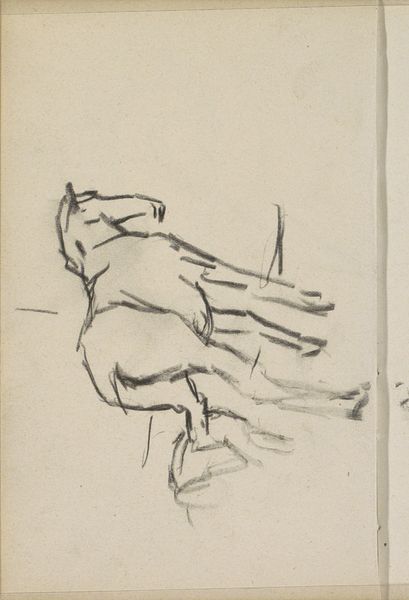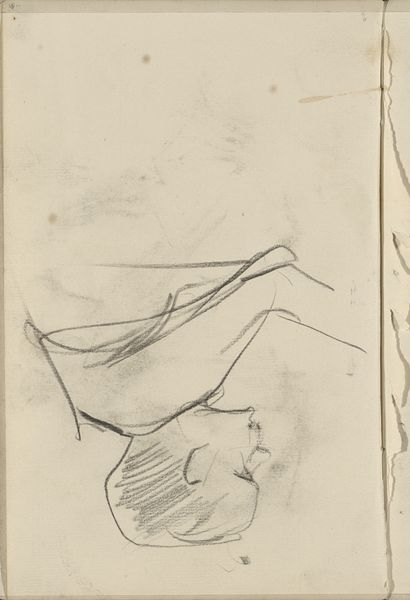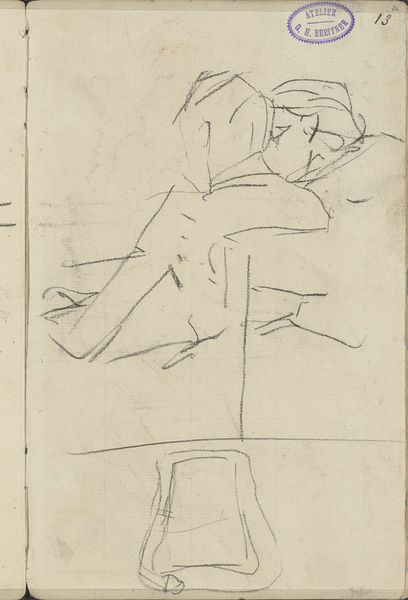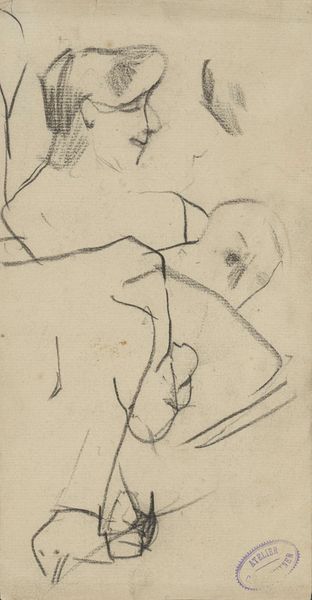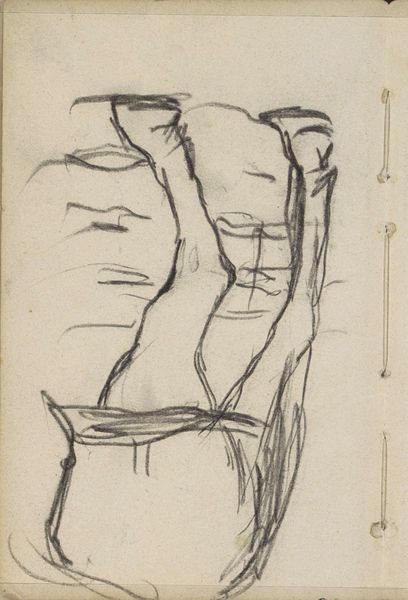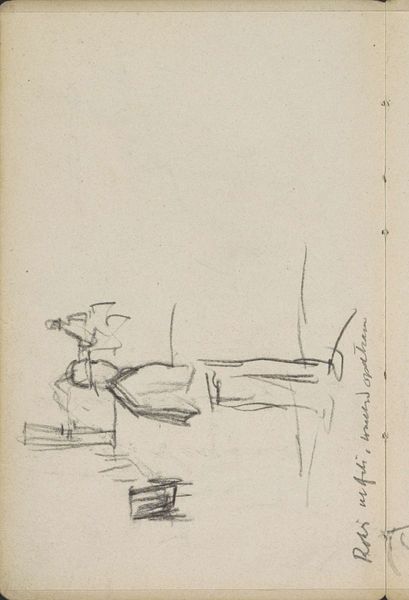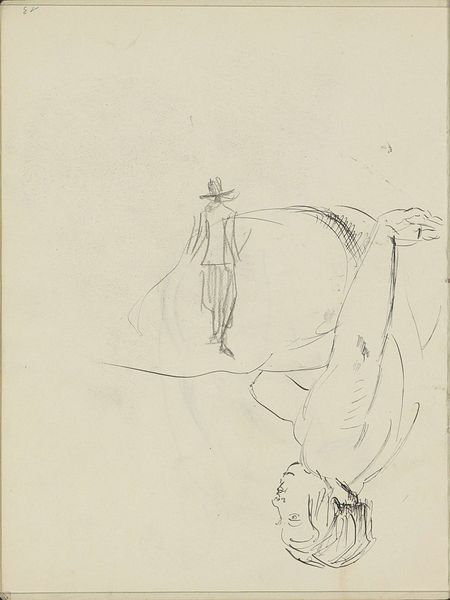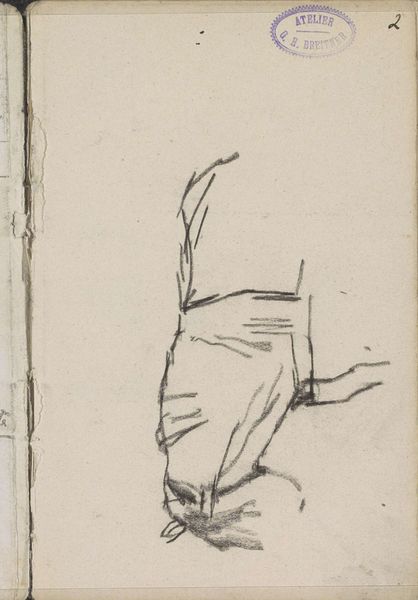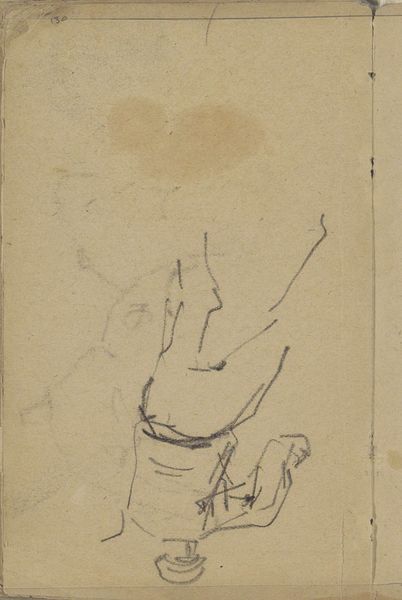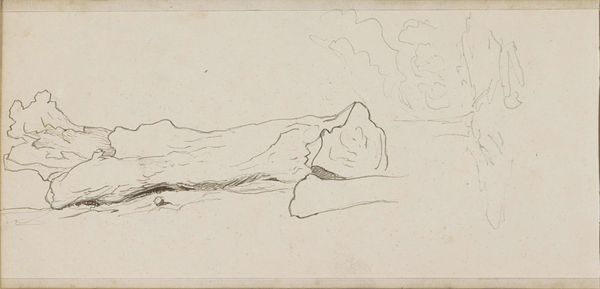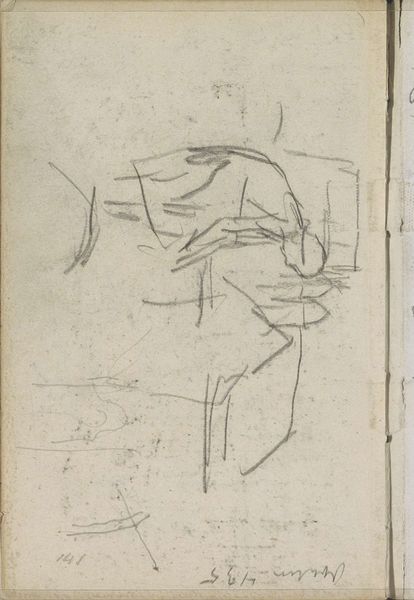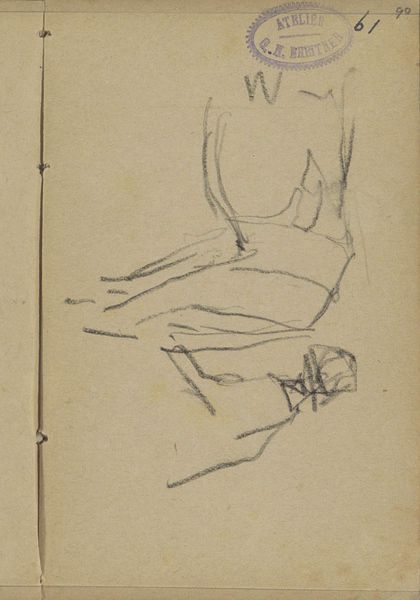
drawing, paper, pencil
#
drawing
#
pencil sketch
#
figuration
#
paper
#
pencil
#
line
Copyright: Rijks Museum: Open Domain
Curator: Looking at this pencil sketch, "Twee paarden" by George Hendrik Breitner, created between 1881 and 1883, I’m immediately drawn to its raw energy. What's your initial reaction? Editor: Well, "raw" is definitely one word for it. To me, it feels like a hurried, almost impatient study. The lines are so minimal, barely capturing the essence of the horses, let alone their physical presence. The materials, though basic – pencil on paper – emphasize the process, a fleeting moment of observation. Curator: Breitner was very much interested in capturing modern life and the movement of the city and its inhabitants. These studies, which often feel fragmented, almost like snapshots, contribute to this focus and become important documents in this goal. His involvement with the Hague School placed importance on portraying everyday subjects, lending a kind of dignity to even the most ordinary scene. Editor: Dignity? I see more a reflection of the artist’s process of rapid observation and translation. The social implications come into play, certainly, with the working animals represented here, but it is Breitner's method that grabs my attention. Think of the cheapness and ubiquity of the materials themselves; how it emphasizes that sketch was about working and producing as well as depicting. It speaks to a larger cycle of labor and consumption. Curator: I agree with your emphasis on labor but would say it broadens beyond this into questions about how industrialization altered artistic modes. Breitner was, to an extent, influenced by photography, where speed of image creation also came to dominate; and he, like Degas, often drew, sketched, and then painted from his photographic stills. What might look ‘quick’ here needs to also be understood in a period of shifting technology, ideas, and outputs, and what that might mean for seeing the world. Editor: And yet, it’s not just technological progress we should consider but its relationship to societal divisions. Breitner depicted Amsterdam so actively as he saw it; which necessarily engages ideas of what images circulated among social classes and who was engaging in artistic production during that period. Who has the leisure, or frankly, the resources to depict and preserve such moments in time? Curator: That is a useful lens; considering who gets seen and how their lives are interpreted becomes vital when engaging with artists such as Breitner, who engaged with these realities directly. Thanks for providing that framework. Editor: Likewise. Highlighting not just the art but its method can reveal interesting insights that shift away from focusing merely on his aesthetic goals.
Comments
No comments
Be the first to comment and join the conversation on the ultimate creative platform.
